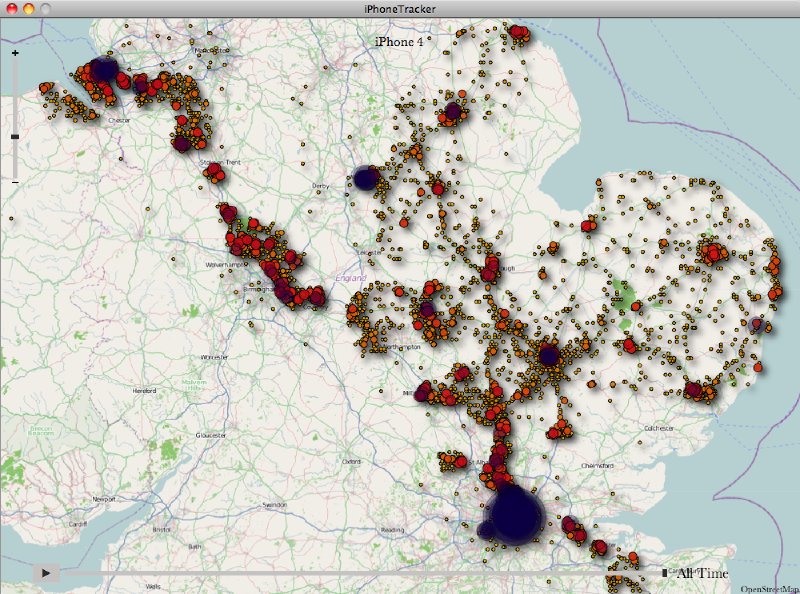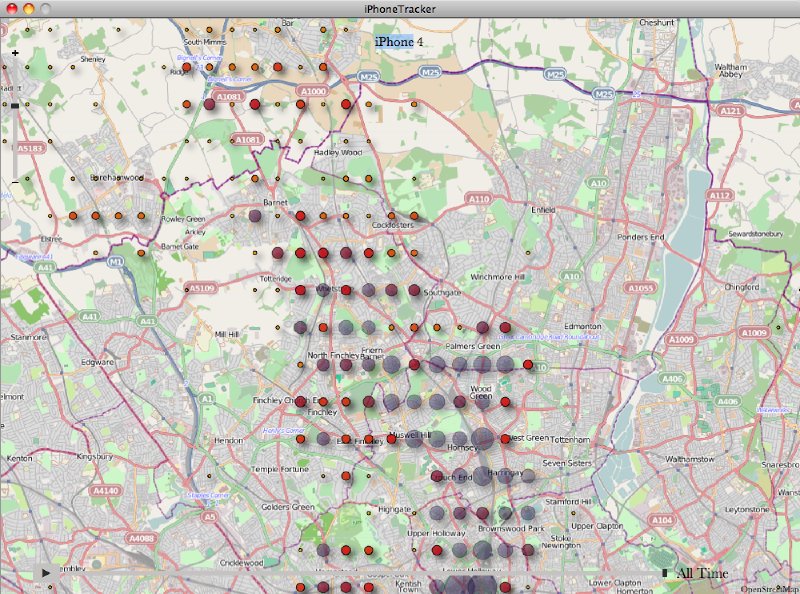Where my iPhone has gone
The amusing thing about the brouhaha over the iPhone storing where you’ve been is that the first thing most people have done is post their maps online, like mine here:

It seems rather than worry geeks, most of us find the data amazing. I suspect that’s because most of us know that this data could be got otherhow anyway – all it really shows is where your phone has been, and the phone operators know that anyway – and I typically trust them a lot less than I trust Apple (not that I think Apple is angelic, it’s a shareholder owned company, but I generally have a more antagonistic relationship with phone companies than I do Apple). So the fact the data resides on my phone is handy – if I was worried about people tracking where my phone goes then I’d never turn it on.
What’s interesting is the visualisation is a bit weird. To look at my map you’d assume I had two homes – one is in London, and the other is on the M6 Toll road. At a guess (I’ve not had time to dig into the code) I’d say what it’s actually measuring is location based on cell phone towers seen by your phone, and the number of dots is a sort of multiplication of frequency in area by cell tower density.
Here’s a zoom in of my map along the train line between Cambridge and London, which shows you it’s not the most accurate of maps – good enough for an indication, but not good enough to put you in a building:

If you have a Mac and want to see where your iPhone has been (and then, like most people, post it to the Internet :) then you can get the tool to do so here. What I think is potentially really exciting is what you can do with the data now that you have access to it, not just your phone company. Quentin has already had the idea that you could use it to geotag your photos, which would be awesome, but how about things like carbon calculators, trip reports, and so on?
Update: See the next post for a mistake with the analysis here.
- Next: Where my iPhone has really been
- Previous: The 365 so far in graph form
- Tags: Geek, Travel